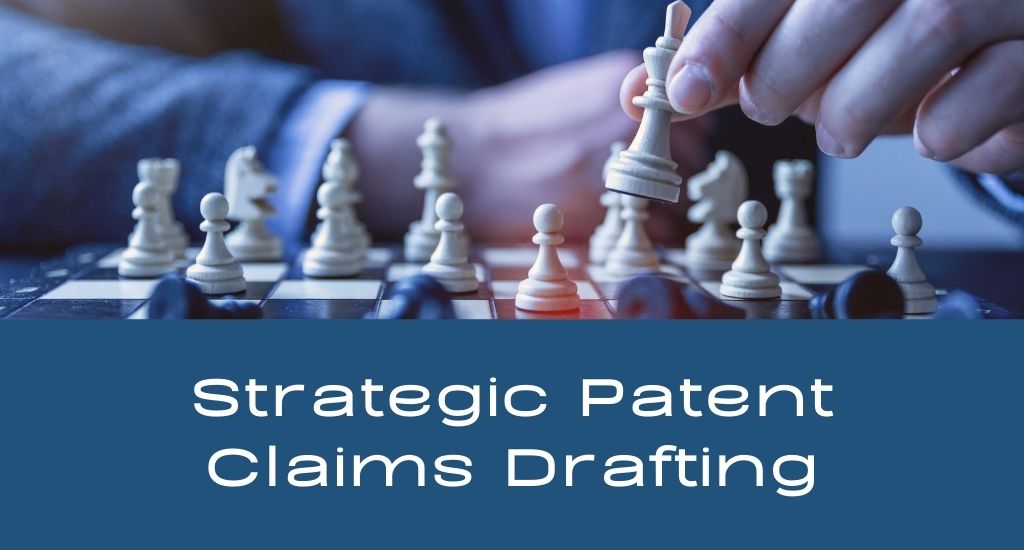- July 31, 2020
- Posted by: mbipuser
- Category: Ip Topics

Last month we discussed some ideas for preventing 101 rejections. A few additional tips may be helpful in this regard. Also provided herein are some additional general tips to help obtain allowable claims that will provide patents that add value to a client’s portfolio.
General & 101 Tip: Identify an inventive concept that solves a problem in the art
The first is to identify an inventive concept that can be pointed to, and any sub-concepts. It should be shown how the inventive concept or sub-concept specifically solves a problem in the art, especially when that problem is specifically with regard to the operation of a computer. Such problem should be clearly set forth generally in the background and prior art solutions to the problem should be noted and specifically disparaged. Note that if the invention or inventive concept itself relates in part to the recognition of the problem or the deficiency of prior solutions, such that, for example, the solution may be trivial in view of the recognition, the recognition of the problem with the prior art and the prior art solutions should be done in the summary of the invention section to show that the recognition is part of the inventive solution itself. The claim should be drafted to cover the inventive concept.
101 Tip: The inventive concept should be action-oriented
In addition, the inventive concept should always be described and claimed in terms of a real world action that is taken as a result of any calculations that are performed. Simply computing a result is typically insufficient and will almost always result in a 101 rejection. To avoid this, the claim must “do” something useful with that result. Another way to say this is that the claim should have a “payoff”. For example, simply detecting a cyber security attack is insufficient. However, performing mitigation upon detection of such an attack is usually sufficient to avoid a 101 rejection. In this regard, the specification should describe at least one, and preferably more than one, mitigation action that may be performed.
101 Tip: A method claim should recite the environment in which it is performed
It is also a good idea for any method claim to recite the environment in which the method is performed. For example, the computer, the network arrangement, etc. should be set forth. This especially helps avoid 101 rejections when in order for the invention to achieve its effect it has to work at the speed of computers and network communications, e.g., process millions of packets. This avoids a 101 rejection that says the method can be done by a person, because it can be shown that the claimed invention is born of computer technology and that a person could not perform the method in the mind.

101 Tip: Point out an improvement in the computer system, computer components, or the network itself
Another approach to avoiding a 101 rejection is to try to point out an improvement in the “computer”, “computer system” which can include many computer and network components, or the network itself. This can be done even if the computer, computer system, or network does not actually go faster in absolute terms because of the invention. Rather, it can be pointed out that the computer, computer system, or network appears to go faster from the point of view of the user.
In other situations, it can be pointed out the computer, computer system, or network remains more available or more responsive to legitimate users, e.g., when the inventive concept relates to, for example, providing computer security that thwarts some type of attack. With certain inventive concepts, it could be pointed out that the claimed invention costs less, requires less battery, takes less manipulation by the user, and so forth.
101 Tip: Explain why a person would not solve the problem in the manner claimed
Another approach is to set forth how a person would actually solve the problem and then show that the claimed method is not simply a straightforward automation of the way of what a person would actually do but rather that the claimed method is very different there from.
General Tip: A new application one should employ a problem-solution approach
Turning to other areas, generally when drafting a new application one should employ a problem-solution approach to claim drafting. Begin from the problem, not from an embodiment. To this end, the claim should be written even before writing the specification. Keep in mind the underlying inventive concept and make sure to claim it. Then, ensure that the specification provides adequate support, therefore.
Think about it like this. Try to claim the genus and then go back and make sure the specification has sufficient species that support the genus. If there is only one species, you might find your claim being interpreted to cover only that one species notwithstanding that the claim is couched in terms of a genus.
Remember that a claim does not have to teach a best embodiment. Rather, a claim is valid as long as it does not read on the prior art. To that end, again, make sure that the specification has sufficient support.
General Tip: Make sure that the specification has sufficient support and leads to an articulable “payoff”
As noted above, at least each independent claim should lead to an articulable “payoff” which is its citable advantage. This is true even if one is not worried about 101. If not in the summary, as some are wont to do, then the detailed description should start with a general statement of “the problem of X is solved by doing Y, making sure that Y does not read on the prior art. Such statement should identify the underlying inventive concept in understandable plain language. Such should call out the inventive departure.
A few additional statements can also set forth additional high‑level inventive features. Such statements are helpful because they alert an examiner to what is believed to be the inventive concept. An additional benefit may also be realized in Europe in the avoidance of a requirement to add additional “essential elements”, as one can point to the minimalist statement of what is required.

General Tip: Envision the opposing team and have constant awareness of their strategy
Another helpful drafting approach is to envision the opposing team, i.e., a potential infringer, and have constant awareness of what they might do to avoid the claim. As is generally appreciated, the patent attorney or agent’s job is to make sure that someone cannot co-opt the benefit of what your client has invented while avoiding the claim language and hence escaping being an infringer of the claim. Stated another way, it should be recognized that the point of a patent claim is to read on what the other guy, i.e., the potential infringer, is going to do and not really so much on what your client is doing.
To this end, when drafting, one should search for underlying functionality rather than any particular structure. The independent claims should be drafted to the functionality while various dependent claims are drafted to the particular disclosed structure.
General Tip: The words of a claim should be as few as possible
Consider a claim as an exercise in packing for a trip and pack only what you need. More verbiage is likely to be interpreted in a more limiting manner and might, therefore, not cover what an infringer winds up doing. As such, remember that claims are not intended to be explanatory, notwithstanding examiners’ desires that they should be so, especially in some foreign jurisdictions. Therefore, in the claims, whenever possible, only define, but do not explain, why or how something is done. The explanation should be left for the detailed description.
Tip: Leave any unnecessary descriptive labels out of the claim
Further to and in aid of the above point, leave any unnecessary descriptive labels out of the claim. Instead, put them in the detailed description as examples. In addition, consider if a genie or G-d can do something for you, or give it to you, and if so, leave it out of the claim. Generally assume that input signals and data/parameters values are already in hand. There is generally not a need to receive them, although, sometimes doing so can be helpful with regard to 101, so consider carefully.
